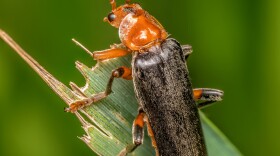With a name like Dracula Ant, you might venture a guess as to why this species received its common name.
But rather than the image of a rogue ant roaming the landscapes of Southeast Asia and Australia in search of random victims, in reality they engage in “nondestructive cannibalism”, drinking the blood of their developing young without killing them. Creepy, but not deadly.
As bizarre as this may seem, this is not even what this species is most famous for. Dracula Ants have the fastest known movement in all of nature.
We’re not talking about something like the speed in which a Peregrine Falcon dives from the sky, but in the movement of a body part. Sort of like the blink of an eye.
And while the blink of an eye may seem pretty fast, the snap of a Dracula Ant’s mandibles is 5,000 times faster. With blinding speed, their jaws can go from 0 to 200 miles per hour in 15 microseconds. So fast, in order to see the action, researchers had to film the ants at 480,000 frames per second.
The secret to their record-breaking speed lies in their strong, but flexible, mandibles. By simply pressing them together, their jaws store energy, eventually releasing when one mandible slides past the other …similar to what happens when you snap your fingers, but 1,000 times faster.
Pretty impressive. But what good are these speedy jaws? Are they used for predation or as a defense? Unfortunately, not much of this species’ biology is understood.
However, evidence exists of Dracula Ants hunting centipedes. And with the potent venom most centipedes pack, speed would be an important part in capturing such prey before it could fight back.





